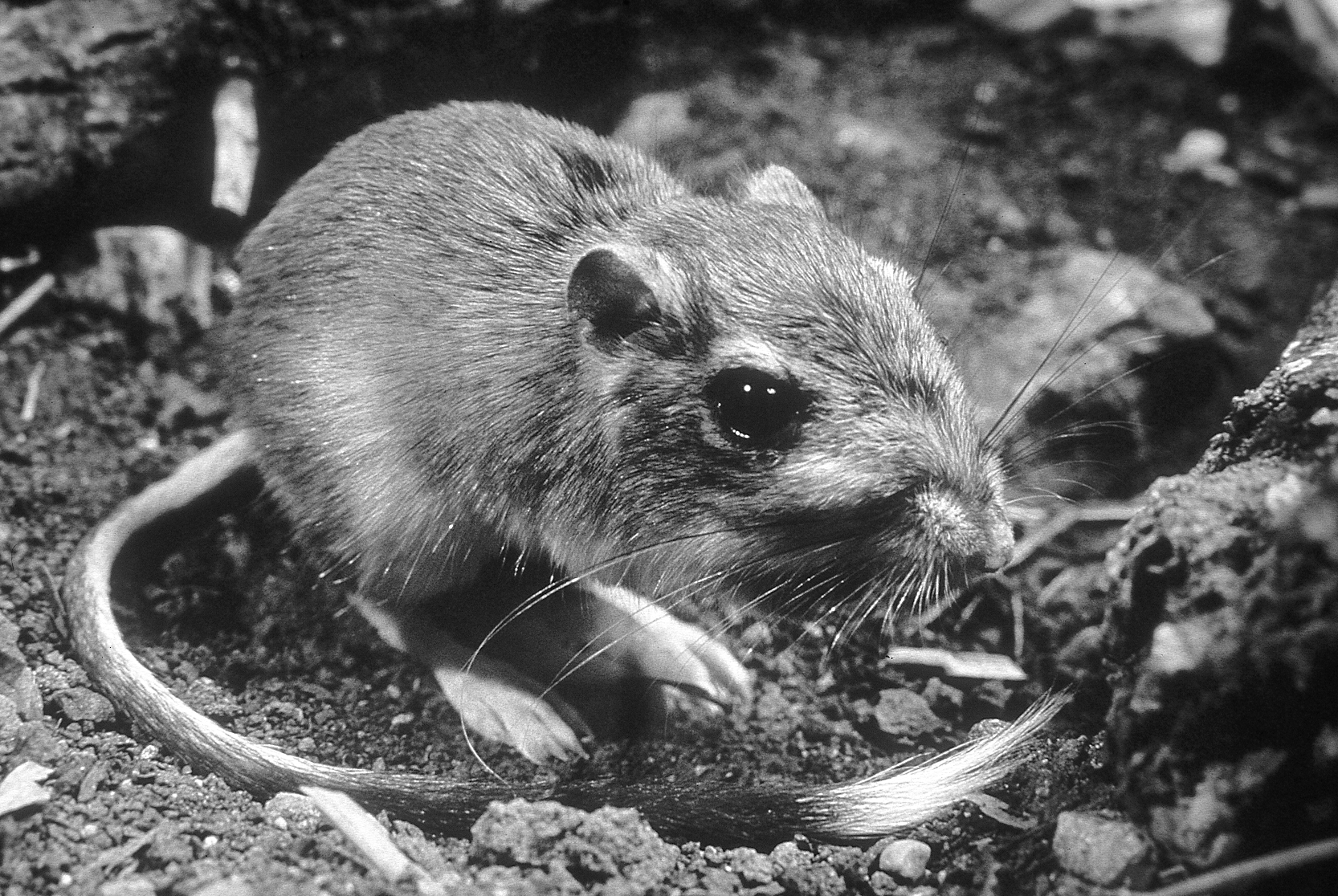TEXAS KANGAROO RAT
Dipodomys elator Merriam 1894
Order Rodentia : Family Heteromyidae
DESCRIPTION. A rather large, four-toed kangaroo rat with conspicuous white banner on tip of tail; tail long, relatively thick, and about 162% of length of head and body; body large (about 121 mm in length); upperparts buffy, washed with blackish; underparts white. This species superficially resembles D. spectabilis, but cranial differences readily separate them, and their distributions are disjunct. Dental formula: I 1/1, C 0/0, Pm 1/1, M 3/3 × 2 = 20. Averages for external measurements: total length, 317 mm; tail, 196 mm; hind foot, 46 mm.

DISTRIBUTION. Occurs in north-central Texas from Cottle and Motley counties in the west to Montague County in the east.

SUBSPECIES. Monotypic species.
HABITS. The Texas kangaroo rat is a rare rodent with habitat preferences unusual for a kangaroo rat. It lives on clay soils supporting sparse, short grasses and small, scattered mesquite bushes. The rats make trails leading to their burrows, which invariably enter the ground at the base of a small mesquite, often in such fashion that one root of the mesquite forms the top or side of the opening. Scratching and dusting places, so characteristic of other species of kangaroo rats, are inconspicuous. The burrow is similar to that of Ord's kangaroo rat, but usually it is shorter and the animal does not plug the entrances during the daytime. Highly nocturnal, these kangaroo rats do not become active until complete darkness and reportedly cease activity on moonlit nights.
Dipodomys elator feeds on the seeds, stems, and leaves of grasses, forbs, and some perennials. Analysis of material recovered from the cheek pouches of 52 Texas kangaroo rats showed that the seeds of cultivated oats (Avena) and Johnsongrass (Sorghum) were the most important food items, followed by annual forbs such as stork's bill (Erodium), broomweed (Xanthocephalum), and bladderpod (Lesquerella). Shrubs and insects were not greatly utilized for food. Texas kangaroo rats store food to carry them over periods of scarcity, as do most other kangaroo rats.
Dipodomys elator may breed year-round. Pregnant females have been collected in February, June, July, and September. The young appear to develop rapidly, as subadult females collected in late summer have also been pregnant. Two peaks in reproductive activity, in early spring and again in late summer, may occur; mature females give birth early in the year, and their rapidly developing young become reproductively active in late summer. Average number of embryos is three.
POPULATION STATUS. Rare. The Texas kangaroo rat has a restricted distribution along portions of the Red River. Also, it appears to be a habitat specialist, further restricting its abundance.
CONSERVATION STATUS. The IUCN lists the Texas kangaroo rat as vulnerable. It is not on the federal list of concerned species, but it is currently under review. The TPWD lists the Texas kangaroo rat as threatened because of its restricted geographic range and because of habitat alteration for agricultural purposes. It appears that heavily grazed rangeland and the eroded sites of well-worn rangeland roadways may provide optimum habitat for this species, in the same manner that overgrazing and trampling by bison may have done in the past.
From The Mammals of Texas, Seventh Edition by David J. Schmidly and Robert D. Bradley, copyright © 1994, 2004, 2016. Courtesy of the University of Texas Press.
Natural Science Research Laboratory
-
Address
Museum of Texas Tech University, 3301 4th street, Lubbock, TX 79409 -
Phone
806.742.2486 -
Email
nsrl.museum@ttu.edu

